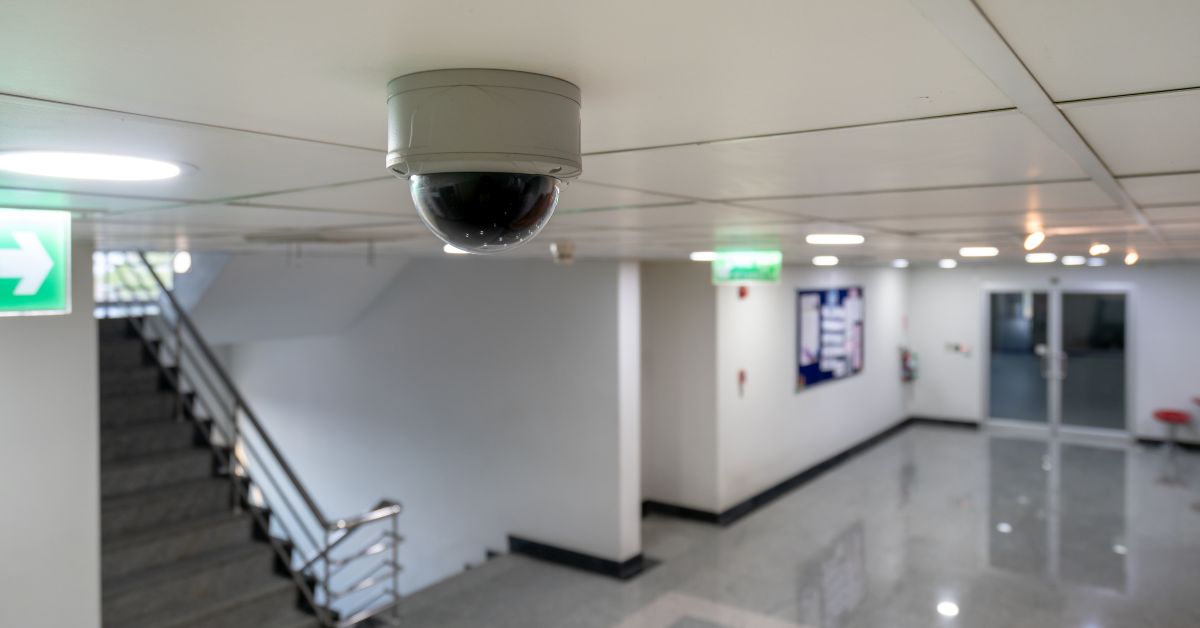Tips for Improving Commercial Building Security

Why Commercial Building Security Is Non-Negotiable
Let’s brush up on the importance of building security before exploring strategies. A secure building prevents theft, damage, or unauthorized access and protects the safety of everyone inside. Plus, it reduces liability risks and improves your organization’s reputation by demonstrating your commitment to safety.
Security threats have evolved in the age of technology. You must protect your physical space and digital information these days. Cyber threats and information theft have become an increasing concern for businesses, so it’s best to adopt a holistic approach to security. Learn how you can secure your building from all angles.
1. Start With a Comprehensive Risk Assessment
Improving your building’s security begins with identifying its weaknesses. Conduct a thorough risk assessment to highlight the areas that need the most attention and understand which security improvements to prioritize.
Follow these steps to perform a detailed risk assessment:
- Inspect entry and exit points for vulnerabilities. For example, consider whether windows are easy to break, doors lack secure locks, or fences are scalable.
- Examine current security systems for blind spots or failures, such as which areas your cameras don’t cover or how quickly alarms respond.
- Seek guidance from security professionals to gain an external, unbiased evaluation. Specialists can identify issues you may overlook.
- Engage employees and tenants by asking for their observations. They might notice inefficient practices, outdated policies, or overlooked risks.
During this process, remember to take detailed notes and create a prioritized to-do list. Strengthening your building’s security begins with a fact-based understanding of where you stand today.

2. Upgrade to Smart Surveillance Systems
Traditional surveillance systems no longer cut it when it comes to modern threats. Thankfully, today’s advanced security cameras have features that deter threats and offer reliable support during investigations.
High-definition video ensures every image or video is crisp, whether it’s daylight or nighttime. Additionally, motion-sensor technology notifies you of any unusual movements in designated areas so you can respond to incidents in real-time. Use a system with integration capabilities to ensure your surveillance system works in harmony with security measures, such as alarms and motion detectors.
Position cameras at strategic points, such as main doors, employee parking lots, hallways, and loading docks. For example, consider upgrading parking lot cameras with night vision and motion detection to reduce after-hours incidents, such as vehicle break-ins.
3. Use Exit Devices for Emergency Preparedness
Door exit devices, such as panic bars or crash bars, are key to establishing safe evacuation routes during emergencies. These systems save precious time when it matters the most by enabling easy exits while preventing unauthorized entry.
Yet, you must remember to regularly test all exit devices and include them in your annual maintenance checks to ensure they remain fully functional. Additionally, try pairing panic bars with alarm systems that provide immediate notifications during emergency exits.
4. Restrict Access With Credential Systems
Transitioning from traditional locks and keys to electronic access control systems drastically improves building security. Taking this step allows you to grant or revoke permissions to specific areas for authorized employees quickly and efficiently.
Benefits of Credential-Based Access Control
- These systems track access activity to monitor who entered sensitive areas, when, and for how long.
- They often simplify administrative tasks, especially when an employee leaves or loses their credentials. You can also deactivate their access without needing to replace physical locks.
- Reduce risks related to keys getting copied, lost, or stolen.
Choose a modular access control system that scales with your company’s needs. For example, a small business may start with key cards but can upgrade to biometric scanning as it grows. Credential-based systems are an excellent option to protect critical areas.
5. Train Employees and Tenants in Security Awareness
Sometimes, human error can undermine even the most advanced systems, so train everyone who works or lives in the building on proper safety practices to increase your building’s defense against potential threats.
Recommendations for Security Training
- Teach employees to spot suspicious activity, from unauthorized personnel to unfamiliar vehicles.
- Provide clear instructions for responding during emergencies.
- Train employees on cybersecurity basics, such as how to avoid phishing scams and device security.
6. Enhance Perimeter Security
A building’s perimeter security is your first line of defense. Ensure fences, gates, and outdoor lighting offer adequate protection against break-ins and unauthorized access.
Key Perimeter Enhancements
- Since criminals typically avoid well-lit spaces, install security lighting with motion sensors around outdoor areas.
- Set up boundary cameras to monitor areas, such as parking lots, loading zones, and alleys.
- Add thorny bushes and similar landscaping features near ground-floor windows to deter potential trespassers.
7. Integrate Cybersecurity Measures
Commercial building security extends beyond the physical realm. Cybersecurity breaches pose significant threats to businesses, especially those relying on smart devices and data storage.
Protecting your networks and devices is just as vital as securing windows and doors, so consider the following cybersecurity tips for your building:
- Use firewalls and encryption to safeguard sensitive data and prevent hacking attempts.
- Secure Wi-Fi access to ensure only authorized personnel can connect to your building’s network.
- Provide training to staff on recognizing phishing attempts and secure password management.
However, make sure to encrypt the devices and cloud systems to prevent an unauthorized individual accessing your footage if your building uses a smart surveillance system.

8. Establish a Crisis Management Plan
A well-documented crisis management plan ensures you and your team know how to respond to various safety threats. This plan should cover responses to common emergencies, such as fires, break-ins, or natural disasters.
Create a detailed crisis plan that includes an evacuation route and post the route on every floor alongside emergency contact information. Schedule semi-annual practice drills to rehearse safety procedures so everyone understands the protocols and reacts calmy in an emergency.
Securing your commercial building isn’t a one-time effort—it requires continuous improvements and updates to address evolving threats. By following these tips for improving commercial building security, you’ll create a comprehensive strategy that protects assets and puts safety first.

Author
Greg Richard
Chief Technical Officer and Founding Member of DoorHub.com